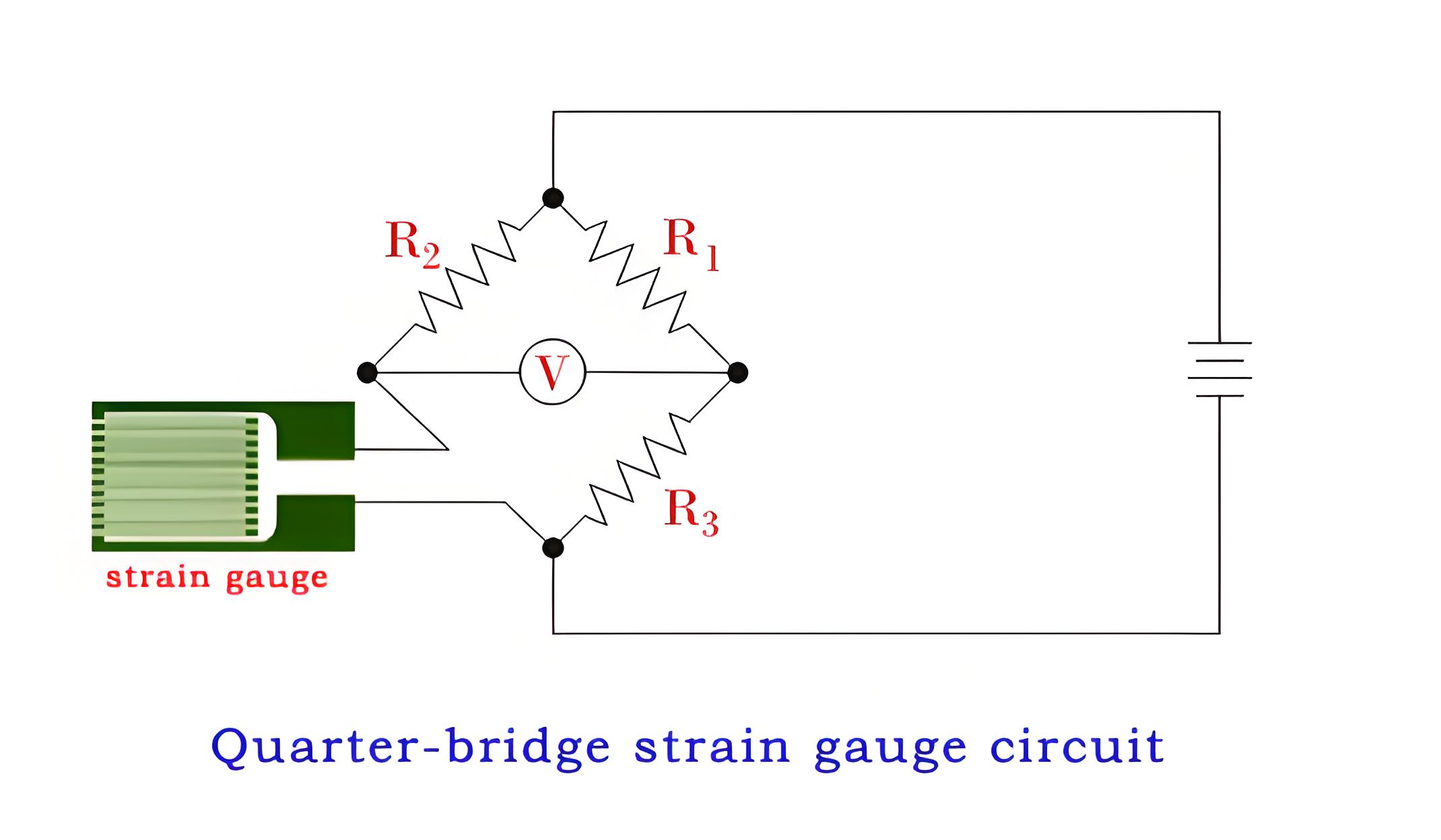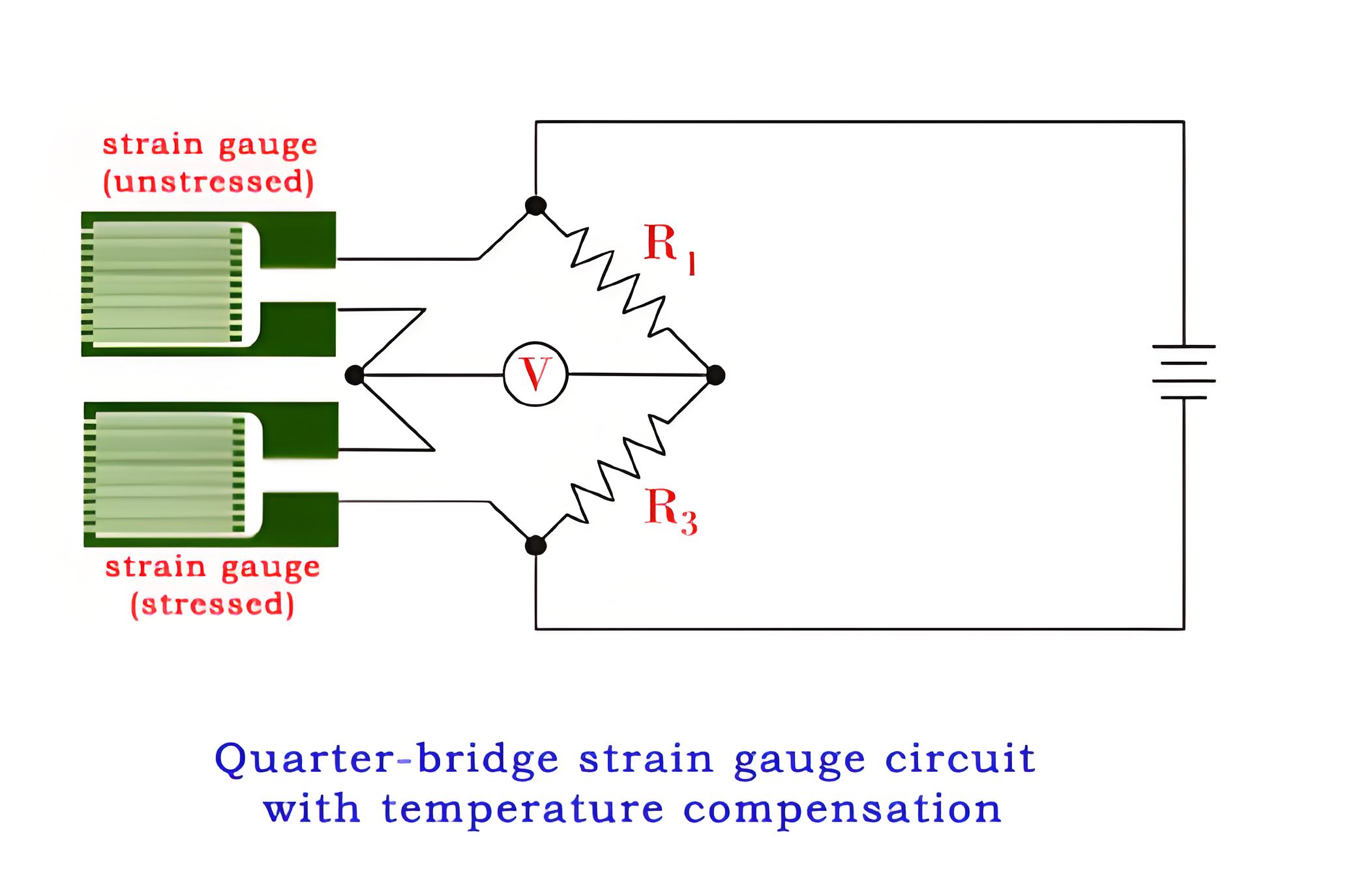What is a Strain Gauge?
What is a Strain Gauge?
Strain Gauge Definition
A strain gauge is a device that measures the deformation (strain) of an object when force is applied, through changes in electrical resistance.

Working Principle
The strain gauge detects minute geometrical changes as resistance changes, which indicate the level of stress on the material.
Bridge Circuit
The strain gauge is part of a bridge circuit, where it helps detect imbalances in resistance that correspond to stress, measured by a central voltmeter.


Temperature Compensation
To address temperature-induced resistance changes, strain gauges often include compensation techniques using materials like constantan alloy or dummy gauges.
Common Uses
In the field of mechanical engineering development.
To measure the stress generated by machinery.
In the field of component testing of aircraft like; linkages, structural damage etc.
The Electricity Encyclopedia is dedicated to accelerating the dissemination and application of electricity knowledge and adding impetus to the development and innovation of the electricity industry.













